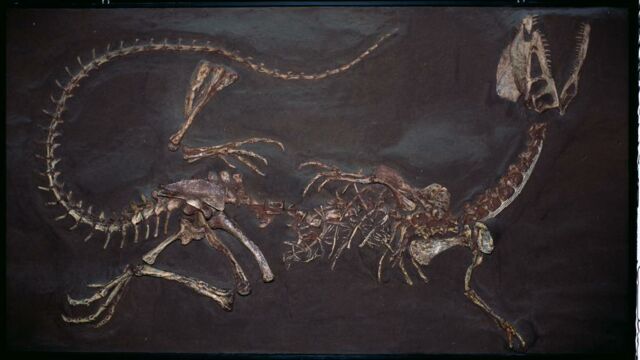Researchers discover prehistoric fossils of a rare bear-dog hybrid

The discovery of a bear-dog fossil in France suggests that the ancient animal was more widely distributed around the world than previously thought.
In the Pyrenees region, researchers have found a bear-dog mandible fossil. This animal, now extinct, was rare in this region, and this jawbone probably belonged to the genus of Amphicyonids (carnivores related to canids).
Discover our latest podcast
Prehistoric bear-dog hybrid
Despite their name, these bear-dog creatures were neither bears nor really dogs. However, this did not prevent them from having characteristics similar to canines (dogs, wolves, foxes) and ursids (pandas and bears).
More under this adMore under this adOur article with @FlorealSole has been published today in @PeerJLife Welcome to Tartarocyon, a new gigantic Amphicyonidae !!https://t.co/DC9wmTFnY6#Ecology#EvolutionaryStudies#Paleontology#Zoology
— Bastien Mennecart (@mennecart_b) June 15, 2022
1/2 pic.twitter.com/ReJfkysGbX
Bear-dogs, or Amphicyonids, were highly variable in size and weight. Some members of this family could weigh over 750 kg! During the Miocene epoch, which was 23 million to 5.3 million years ago, these carnivorous animals were present in many parts of the northern hemisphere. In Europe, their presence was relatively rare, but the fossil just discovered by a team of scientists in the Pyrenees proves that they had managed to expand and adapt to this region.
More under this adMore under this adA new kind of massive wolfdog
In addition, the mandible fossil found is surprisingly large (20 centimetres), and the researchers believe that it belonged to a new genus of bear-dog, the Tartarocyon. Live Science, which was able to contact a member of the scientific team, details in its article:
The researchers estimate that the Tartarocyon was one of the larger species, weighing about 200 kg (441 pounds).More under this adMore under this ad
This article is translated from Gentside FR.
Read more:
⋙ Researchers unearth prehistoric panda fossils that reveal the mystery of their 'sixth finger'
⋙ Rare bear species discovered in Greenland after centuries of isolation
⋙ Ten rare wildcat kittens that are 'functionally extinct' born in Scotland